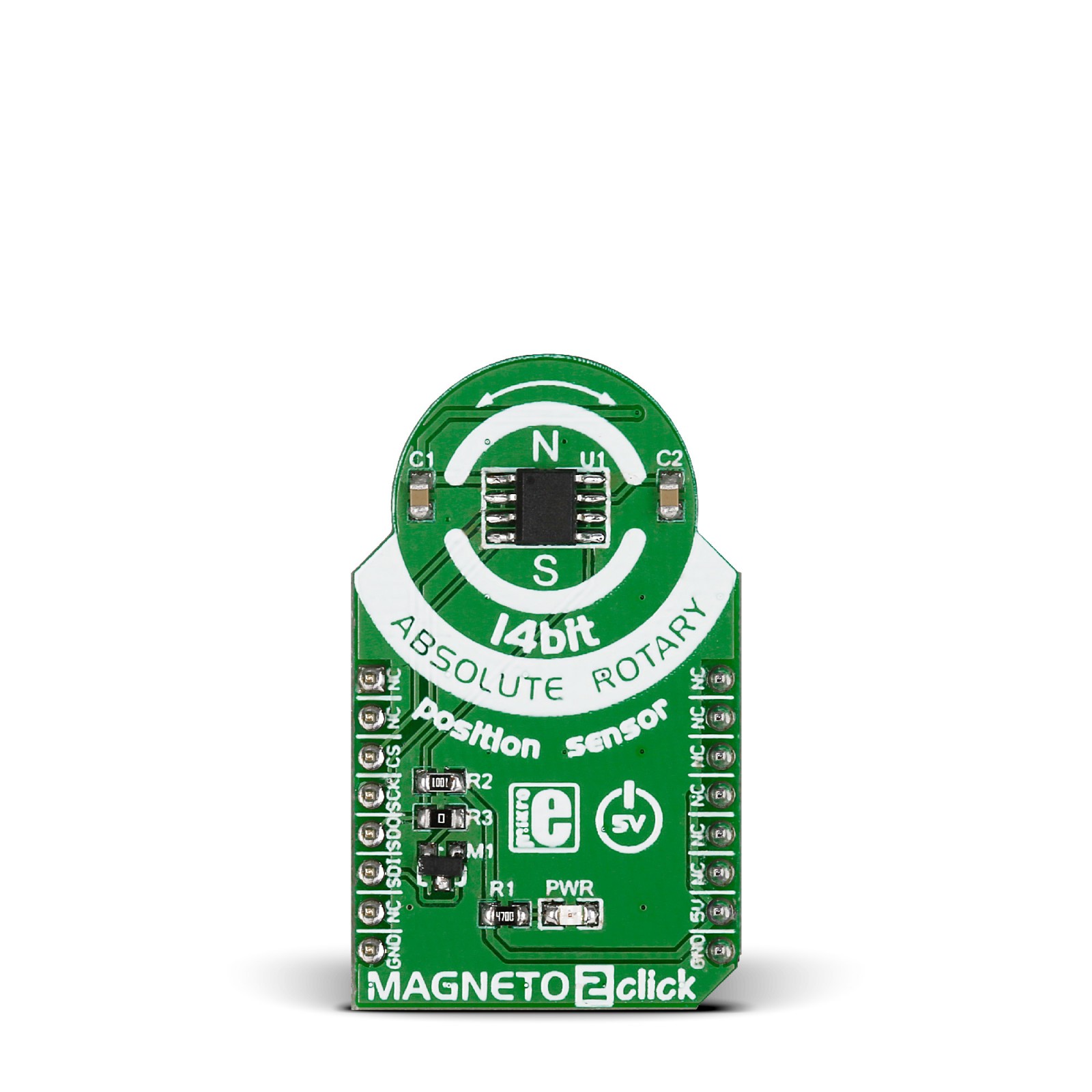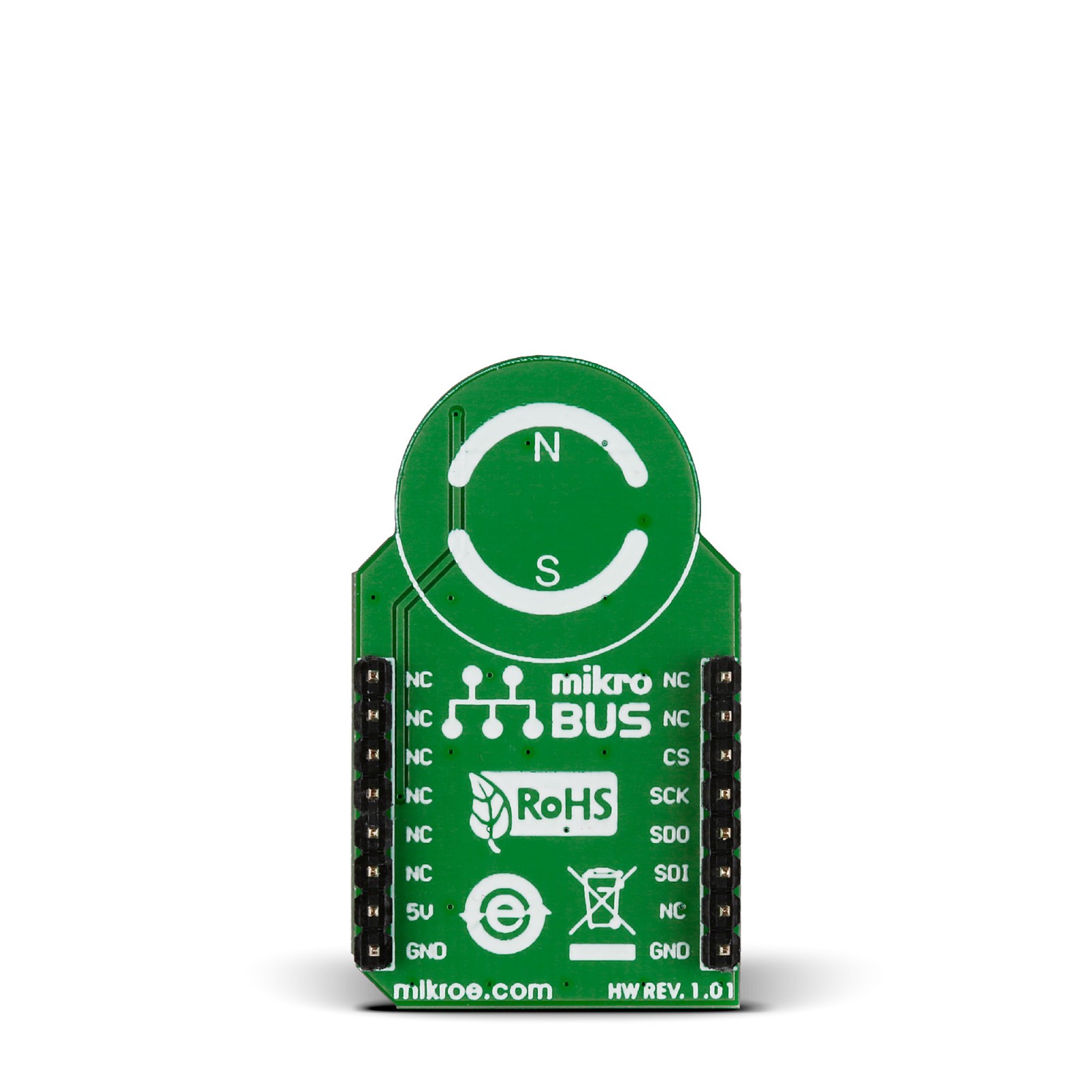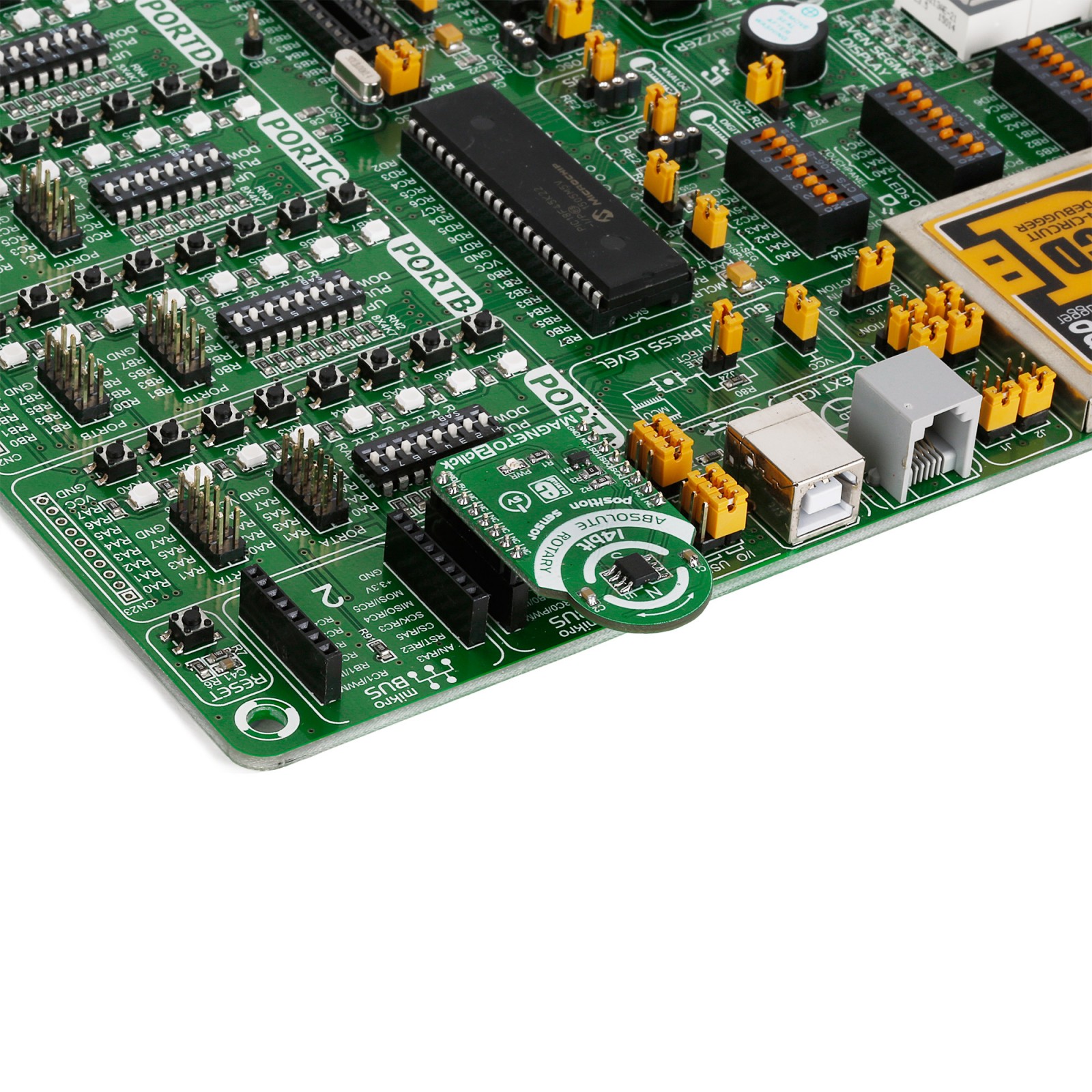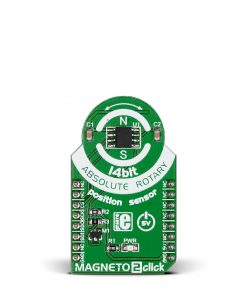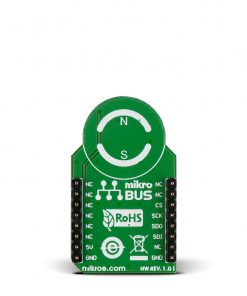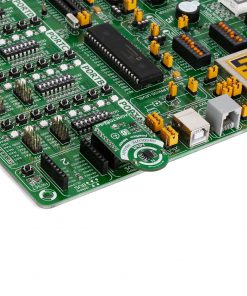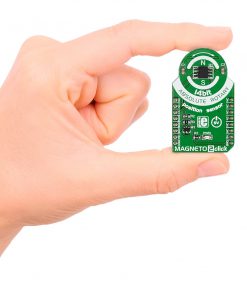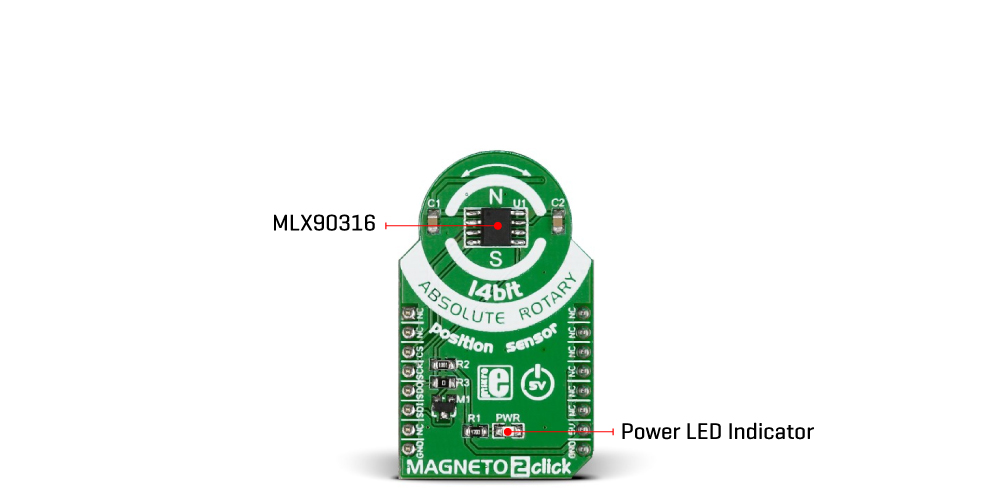MAGNETO 2 Click
R645.00 ex. VAT
Magneto 2 Click is a compact add-on board providing an accurate and reliable magnetic sensing solution. This board features the MLX90316, a Triaxis® rotary position sensor from Melexis Technologies, providing the angular position of a small dipole magnet rotating above the sensor surface (end-of-shaft magnet). The rotation of this horizontal component is sensed over a wide range (up to 360º) and processed by the on-chip DSP to report the absolute angular position of the magnet as 14-bit data accessible through an SPI serial interface. This Click board™ is suitable for non-contacting rotary position sensor applications in automotive and industrial systems.
Magneto 2 Click is supported by a mikroSDK compliant library, which includes functions that simplify software development. This Click board™ comes as a fully tested product, ready to be used on a system equipped with the mikroBUS™ socket.
Stock: Lead-time applicable.
| 5+ | R612.75 |
| 10+ | R580.50 |
| 15+ | R548.25 |
| 20+ | R527.61 |

